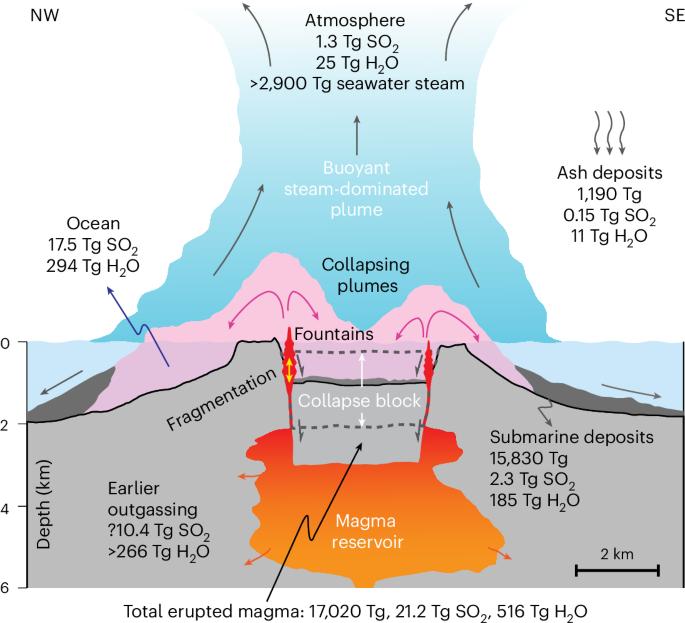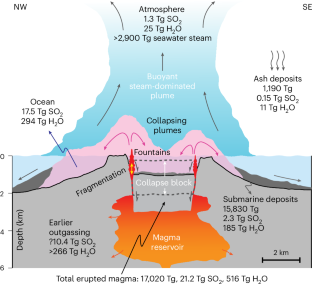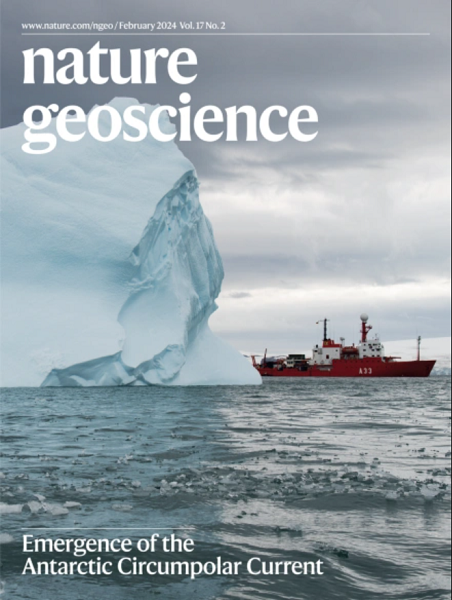巨大的海底火山喷发影响全球气候,但产生的大气硫含量较低
IF 16.1
1区 地球科学
Q1 GEOSCIENCES, MULTIDISCIPLINARY
引用次数: 0
摘要
对2022年洪嘎火山喷发(有记录以来最大的海底喷发)期间岩浆释放的硫和水的预算计算表明,18.8 Tg的二氧化硫释放,其中7%进入了大气。剩余的二氧化硫在海平面以下400 - 1000米的岩浆爆炸破碎过程中溶解在海洋中。本文章由计算机程序翻译,如有差异,请以英文原文为准。


Huge submarine eruptions impact global climate but produce low atmospheric sulfur outputs
Calculation of the sulfur and water budgets released from magma during the 2022 eruption of Hunga volcano — the largest submarine eruption recorded — shows that of 18.8 Tg of sulfur dioxide released, <7% entered the atmosphere. The remaining sulfur dioxide dissolved in the ocean during explosive magma fragmentation at 400–1,000 m below sea level.
求助全文
通过发布文献求助,成功后即可免费获取论文全文。
去求助
来源期刊

Nature Geoscience
地学-地球科学综合
CiteScore
26.70
自引率
1.60%
发文量
187
审稿时长
3.3 months
期刊介绍:
Nature Geoscience is a monthly interdisciplinary journal that gathers top-tier research spanning Earth Sciences and related fields.
The journal covers all geoscience disciplines, including fieldwork, modeling, and theoretical studies.
Topics include atmospheric science, biogeochemistry, climate science, geobiology, geochemistry, geoinformatics, remote sensing, geology, geomagnetism, paleomagnetism, geomorphology, geophysics, glaciology, hydrology, limnology, mineralogy, oceanography, paleontology, paleoclimatology, paleoceanography, petrology, planetary science, seismology, space physics, tectonics, and volcanology.
Nature Geoscience upholds its commitment to publishing significant, high-quality Earth Sciences research through fair, rapid, and rigorous peer review, overseen by a team of full-time professional editors.
 求助内容:
求助内容: 应助结果提醒方式:
应助结果提醒方式:


